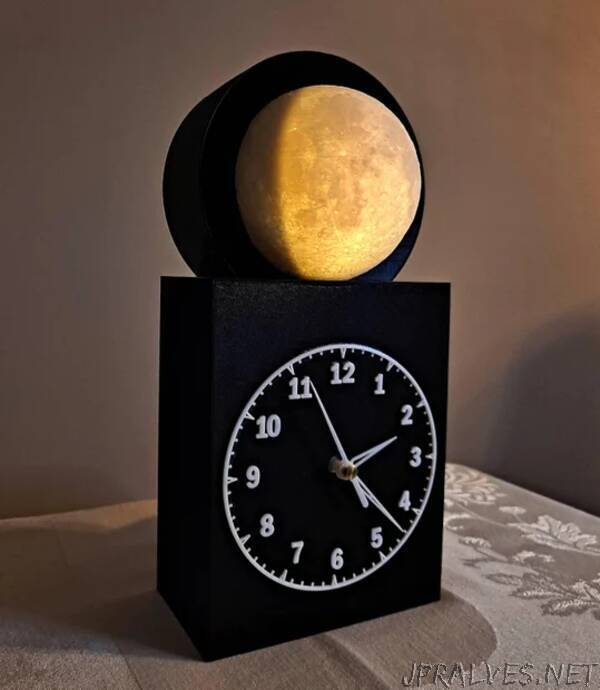
“In this Instructable, I will describe the design and build of a clock that shows the current phase of the moon in a lit 3D printed moon model. This project started this summer when I began to think about a project for my new 3D printer. I had printed accessories for the printer and chose a moon lamp (https://www.instructables.com/Moon-Lamp-With-Remote/) . I thought it would be nice if it could show the moon phases and saw in the comments someone else had the same thought. So I began thinking about a design and this is what I came up with. It was also an opportunity for myself to learn the basics of Fusion 360.
Some General Background
A simplified description of the lunar phase cycle will be used that is based on the average cycle of lunar phases, the synodic month. The synodic month averages 29.530588 days, but can actually vary between about 29.18 to about 29.93 days in any individual cycle, due to the elliptical orbits of the moon and the earth. This results in variations of up to seven hours about the average in any given year https://en.wikipedia.org/wiki/Lunar_month#Synodic_month. The side of the moon facing the earth is gravitationally locked (tidal locking) so we see essentially one hemisphere of the moon from earth. In actuality, over time we see about 59% of the moon due to lunar libration. Libration from our perspective on earth is the slight top/bottom rotation (like nodding yes), left/right rotation (like nodding no) and tilting back and forth (like a metronome) of the moon resulting in an apparent wobble. This is due mostly to the eccentricity of the moons orbit and a slight tilt (6.7 degrees) of the moons rotation axis to its orbital plane, along with the earths tilt. See: https://en.wikipedia.org/wiki/Libration , https://moon.nasa.gov/moon-in-motion/moon-phases/#otp_our_wobbly_moon.
Lunar Libration and the variability of cycles will not be considered for this project.
An interesting additional note is the saros or eclipse cycle. The saros cycle is 223 synodic cycles, approximately 6585.3211 days, or 18 years, 11 days, 8 hours where the Sun, Earth and Moon return to approximately the same relative geometry. Note that this is not a perfect multiple of a year or the same time of day, so basically the positional relationships between the Earth, Sun, and Moon effectively do not ever repeat perfectly, but come pretty close on slightly longer than an 18 year cycle. See: https://en.wikipedia.org/wiki/Saros(astronomy), https://eclipse.gsfc.nasa.gov/SEsaros/SEsaros.html”_
